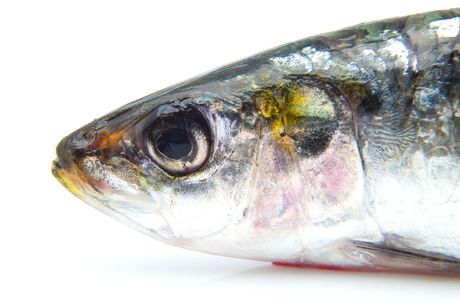'Pescoelectric' energy harvesters for self-powered electronics

Researchers from India’s Jadavpur University have explored recycling fish by-products into an energy harvester for self-powered electronics. Their study has been published in the journal Applied Physics Letters.
The basic premise behind the researchers’ work is simple: fish scales contain collagen fibres that possess a piezoelectric property, which means that an electric charge is generated in response to applying a mechanical stress. But while it is well known that a single collagen nanofibre exhibits piezoelectricity, until now no-one had attempted to focus on hierarchically organising the collagen nanofibrils within the natural fish scales.
“We wanted to explore what happens to the piezoelectric yield when a bunch of collagen nanofibrils are hierarchically well aligned and self-assembled in the fish scales,” said Dipankar Mandal, a co-author on the study.
Mandal explained that the researchers “collected biowaste in the form of hard, raw fish scales from a fish processing market and then used a demineralisation process to make them transparent and flexible”. The collagens within the processed fish scales served as an active piezoelectric element.
“We were able to make a bio-piezoelectric nanogenerator, aka energy harvester with electrodes on both sides, and then laminated it,” Mandal said.
“And we discovered that the piezoelectricity of the fish scale collagen is quite large (~5 pC/N), which we were able to confirm via direct measurement.”
The bio-piezoelectric nanogenerator is capable of scavenging several types of ambient mechanical energies — including body movements, machine and sound vibrations, and wind flow. Even repeatedly touching the bio-piezoelectric nanogenerator with a finger can turn on more than 50 blue LEDs. Furthermore, Mandal noted, “no-one else has been able to make a biodegradable energy harvester in a cost-effective, single-step process”.
The group’s work could potentially be for use in transparent electronics, biocompatible and biodegradable electronics, edible electronics, self-powered implantable medical devices, surgeries, e-healthcare monitoring and in vitro/in vivo diagnostics, apart from its myriad uses for portable electronics.
“In the future, our goal is to implant a bio-piezoelectric nanogenerator into a heart for pacemaker devices, where it will continuously generate power from heartbeats for the device’s operation,” Mandal said. “Then it will degrade when no longer needed. Since heart tissue is also composed of collagen, our bio-piezoelectric nanogenerator is expected to be very compatible with the heart.”
The nanogenerator may also help with targeted drug delivery, which is currently generating interest as a way of recovering in vivo cancer cells and also to stimulate different types of damaged tissues. According to Mandal, “Our end goal is to design and engineer sophisticated ingestible electronics composed of non-toxic materials that are useful for a wide range of diagnostic and therapeutic applications.”
Predictive AI model enhances solid-state battery design
ECU researchers are working on ways to make solid-state batteries more reliable with the help of...
Boosting performance of aqueous zinc–iodine batteries
Engineers from the University of Adelaide have enhanced aqueous zinc–iodine batteries using...
Sodium-ion battery breakthrough boosts energy storage
Scientists have discovered that leaving water inside a key material, rather than removing it,...




